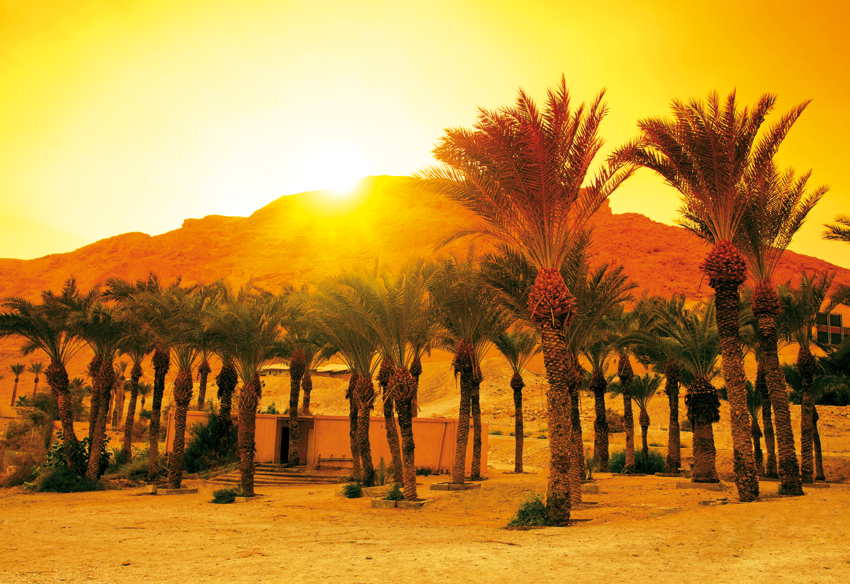

T V SARNGA DHARAN NAMBIAR -
MUSCAT, APRIL 7 -

They are much more than themselves, philoso- phically. As the collective sweet pride of an entire nation, dates easily command awe and admiration. For the people, they represent an ineffable, multi-dimensional continuity to the past and future. For, dates ooze the quintessential Arab legacy. They have defined the legendary Arab hospitality for centuries, and will continue to do so for generations to come. Their sweet influence over the cultural as well as economic firmament of the Arab region (including Oman) hasn’t faded even a bit.
And, at a very mundane level, just 15 of them are enough for a person to meet their recommended daily dose of vitamins, minerals and other essentials. Dates have also been found to protect us from neurodegenerative diseases such as Alzheimer’s. What’s more, boiling date syrup even found use as an intimidating weapon against advancing enemies!
Verily, dates are on a roll!
In hindsight, it was nothing but the dates and dried lemons that stood the Omani seafarers of yore in good stead, even as sailors from other parts succumbed to scurvy. Dates proved to be the perfect long-lasting nutritional source for the nomadic Bedouin tribes. With a high sugar content (up to 80 per cent), dried dates can last for years.
Date palms have been around in the Arab region for millennia; and early references can be traced to the Mesopotamian times. Dates are deeply embedded in the cultural and religious consciousness of Oman, and the birth of a son is celebrated — continuing the tradition — with planting a date palm shoot, reflecting a highly symbolic and symbiotic relation between the tree and man... Further, believers traditionally break their Ramadhan fast with dates.
Oman boasts more than 40 indigenous varieties of dates, including the most popular Khalas, Khunaizi and Fardh. While Khunaizi dates are the most sugary, the Ash Patash and Al Nagal varieties are not so sweet. The most delicious, arguably, could be the Khalas. But, of course, individual tastes differ.

As the primary agricultural crop in Oman, date palms constitute nearly 80 per cent of the total fruit cultivated area and 50 per cent of the total agricultural area in the country. Over 7,600,000 date palm trees in the Sultanate produce more than 345,000 tonnes of dates annually, placing Oman among the top 10 producers of dates globally. Majority of the Omani dates are produced in Dakhiliyah, Al Batinah North and Al Batinah South governorates with their average annual production reaching 63,000-65,000 tonnes.
Significantly, as much as 23 per cent of the total dates produced here are considered surplus, while 51 per cent are used for human consumption. Livestock feed (22 per cent) and industrial processing and export (4 per cent) make up the rest.
Dates in the Sultanate can be categorised into table dates (fit for human consumption in raw form) and manufacturing dates. Table date palms number over five million, and they account for 64 per cent of the total date production in Oman. Khalas Al Dhahira, Abu Naranja, Khunaizi, Khasab and Fardh belong to this category. Manufacturing dates are primarily used as animal fodder, but are fit for human consumption after some processing. These date varieties include Mabsali, Umm al Sala, Shahl and Salani.
Underscoring their economic and cultural significance, the Sultanate has been encouraging research on dates. The Research Council of Oman (TRC) is at the forefront of advanced research on dates aimed at improving their quality and export prospects. One such TRC–funded project is the Development of Computer Vision Technology for Quality Assessment of Dates in Oman.
Researchers at the SQU have developed Near Infrared (NIR) hyper-spectral imaging technology — a better alternative to manual inspection — to classify fungal infected date fruits. This is significant as fungal spoilage can affect dates at the ripening stages and during storage and processing as well, leading to fungal contaminated dates flooding the markets.
SQU researchers have also invented an efficient method to detect surface cracks on dates (which lowers date quality) using colour imaging technique, which can replace visual inspection for quality assessment of dates. These techniques can significantly improve the quality of Omani dates and help boost exports, which currently stand at a dismal 2.5 to 3.5 per cent of the total production.
Further, inefficient traditional cultivation methods, and poor post-harvest management and marketing still sour the date industry.
Experts suggest that enhancing fruit quality by optimising fruit size and boosting nutritional content as well as improving commercial cultivars using molecular techniques can boost the marketability of Omani dates, while orchard layouts and mechanisation in irrigation, pruning, pollination, and harvesting of dates can make the Sultanate’s date industry highly sustainable and profitable.
Oman Observer is now on the WhatsApp channel. Click here



